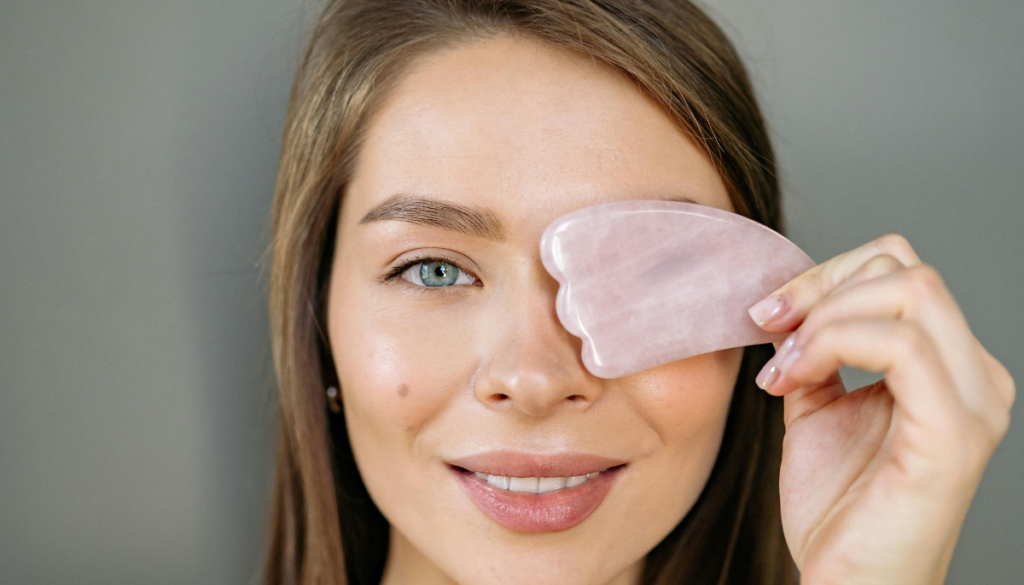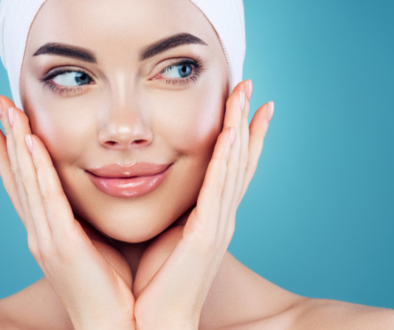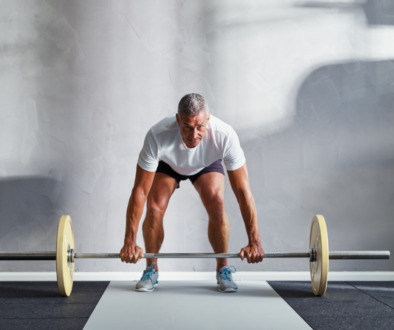Gua Sha vs. Facial Rollers: What’s Actually Worth Using?
Facial massage tools have become a staple in skincare routines everywhere — and two tools lead the conversation: Gua Sha stones and facial rollers. Both promise to reduce puffiness, sculpt the face, and boost circulation. But do they really work? And if you’re only going to invest in one, which one gives you more results?
Let’s break down the differences between these two popular beauty tools, explore the science behind them, and help you decide which is actually worth using — based on your skincare goals.
What Is a Gua Sha Tool?
Gua Sha is a traditional Chinese healing technique that dates back centuries. The name translates roughly to “scraping sand,” and while the original method was more vigorous and used across the body, modern facial Gua Sha is much gentler — designed to move lymphatic fluid, relax facial muscles, and sculpt the face using slow, intentional strokes.
Typically made from:
- Jade, rose quartz, or stainless steel
- Shaped with curves and angles to hug facial contours
How it’s used:
- Apply facial oil or serum
- Use the stone at a 15–45° angle to the skin
- Gently glide it along the jawline, cheeks, brow bone, and neck in upward, outward motions
What Is a Facial Roller?
Facial rollers — often made from jade or quartz — feature one or two rolling stones attached to a handle. They’ve surged in popularity for their simplicity and soothing feel, often stored in the fridge for a cooling effect.
Typically made from:
- Jade, rose quartz, amethyst, or metal
- Features a larger roller for the cheeks/jaw and a smaller one for under the eyes
How it’s used:
- Roll over skin in upward, outward strokes
- Focus on cheeks, under-eyes, forehead, and neck
- Often used to apply serum or after sheet masks
The Key Benefits (and Differences)
Both tools support better skin circulation and can reduce puffiness, but they serve slightly different purposes — and offer different levels of intensity and result.
Gua Sha Benefits
- Deep facial sculpting and muscle release
- Increases lymphatic drainage
- May help relax tension in the jaw, temples, or brow
- Promotes circulation and glow
- Can help with facial symmetry over time
Facial Roller Benefits
- Reduces under-eye puffiness (especially when chilled)
- Enhances absorption of serums and moisturizers
- Soothes and cools the skin
- Easier and quicker to use daily
- Offers a relaxing experience
What the Science Says
While research is still catching up with beauty trends, early findings and anecdotal evidence support the effects of both tools:
- Lymphatic drainage through massage helps reduce facial swelling and puffiness, especially in the morning.
- Cold therapy (especially with rollers) can constrict blood vessels and soothe inflammation.
- Facial massage of any kind improves circulation, which may support skin health and glow.
Gua Sha is more therapeutic and sculpting-focused, while facial rollers offer gentle stimulation and surface cooling. They both promote momentary contouring and relaxation, but Gua Sha offers more long-term sculpting potential when done regularly and correctly.
Which One Is Right for You?
Here’s how to decide based on your goals, time, and preferences:
👉 If your main goal is sculpting and lifting, go for Gua Sha. The flat tool allows for deeper muscle work and contouring, especially along the jawline and cheekbones. With consistent use, many users notice improved facial symmetry and tone.
👉 If you’re dealing with under-eye puffiness, a facial roller might be your best friend. The cool stone (especially when stored in the fridge) can visibly reduce swelling and leave your skin looking refreshed in just a few passes.
👉 For facial tension, like jaw tightness or brow strain, Gua Sha is more effective. Its edge is designed to work on muscle adhesions and help release stored tension through gentle pressure and gliding movements.
👉 Want to enhance your skincare absorption? Both tools help, but facial rollers are especially great for rolling in serums or smoothing out sheet masks without too much effort.
👉 Looking to build a mindful beauty ritual? Gua Sha shines here. The slower, more intentional pace makes it ideal for evening routines or weekend self-care.
👉 Need something quick and beginner-friendly? Facial rollers win for ease of use. There’s no steep learning curve, and it’s perfect for rushed mornings when you want a quick de-puff and glow.
Both tools offer benefits — but the best one for you depends on how much time you have, what your skin needs, and how you prefer to unwind.
How to Get the Best Results (Either Way)
No matter which tool you choose, consistency and technique matter more than price or material. Follow these tips:
- Always apply a serum or facial oil before using your tool to avoid tugging the skin
- Clean your tool with gentle soap and water after each use to prevent bacteria buildup
- Store rollers in the fridge for a de-puffing effect
- Use Gua Sha 3–5x a week for visible contouring and muscle relaxation
- Avoid harsh pressure, especially around the eyes or on active breakouts
Our Favorite Tools to Try
If you’re ready to add one (or both) of these tools to your routine, here are a few high-quality, affiliate-friendly picks:
1. Mount Lai Gua Sha Tool – Rose Quartz
- Elegant, easy to hold, with perfectly curved edges
- Comes with usage guide and storage pouch
2. Skin Gym Jade Facial Roller
- Dual-ended with a cooling effect
- Great for reducing puffiness and pairing with skincare
3. Herbivore Botanicals Gua Sha + Roller Set
- Includes both tools for different moods/goals
- High-quality stone and beautiful packaging
Final Verdict: Gua Sha for Results, Roller for Routine
So — what’s actually worth using? Both tools have their place, but if you’re looking for long-term sculpting, facial tension relief, and a meditative beauty ritual, Gua Sha comes out on top.
If your main goal is quick de-puffing and serum application, a facial roller is an easy win — especially in the morning.
Either way, these tools can elevate your routine beyond skincare and into true self-care — giving you a moment of mindfulness that shows up on your face.




